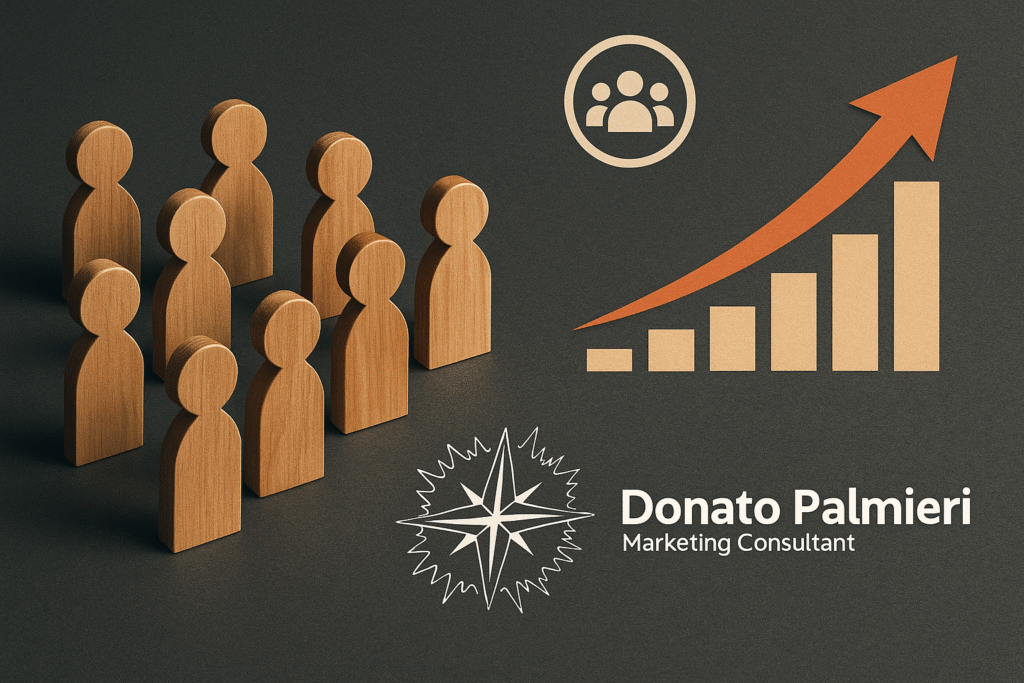Audience Building in Content Marketing
A few years ago, a client told me something that stuck with me: “We’ve been publishing blog content for months. It’s great stuff, but no one’s reading it.” The issue wasn’t the quality—those posts were polished, informative, even SEO-optimized. But they were missing one critical thing: an audience. Nobody was waiting for those articles. When they went live, nobody cared. They didn’t feel like they were written for anyone in particular.
This isn’t an isolated case. In my work as a digital marketing consultant, I’ve seen this scenario unfold time and again—businesses pouring energy into content creation without investing in what really sustains it: audience building. Content without an audience is like a speech delivered in an empty room. No matter how well-crafted it is, it won’t create value unless it reaches the right people.
That’s why audience building isn’t an accessory to content marketing; it’s the very foundation. If you’re aiming to build a content strategy that actually moves the needle, you need to attract, understand, and nurture a real audience—one that trusts you, shares your values, and returns for more. In this article, I’ll walk you through how I help clients do just that.

Index:
- Knowing who you’re talking to
- Creating content with intention
- SEO and discoverability
- Channels: Email and social as amplifiers
- Measuring, learning, adapting
Knowing who you’re talking to
Everything starts here. One of the biggest mistakes brands make is treating their audience as a vague mass of “potential customers.” But real people don’t engage with generic messages. They engage with relevance. Building an audience means taking the time to deeply understand who you’re speaking to, how they think, what they need, and where they already spend their attention.
That’s why the first step in any project I run—whether it’s a full content marketing plan or a focused campaign—is rigorous audience research. Sure, buyer personas help. But the real insights come from combining analytics with qualitative input: surveys, customer interviews, social listening, and performance data from past content.
You need to go beyond job titles and demographics. For example, knowing your audience includes “small business owners aged 35–50” isn’t enough. Are they overwhelmed? Opportunistic? Where do they look for inspiration? What frustrates them? Do they prefer a five-minute video or a ten-minute read with depth?
When you understand those nuances, you stop guessing. You create content that speaks to a specific mindset, answers a clear question, or relieves a familiar pressure. And your audience will start to feel like you really “get them”—which is the first step toward trust.
| Audience Insight | Example |
|---|---|
| Demographic | 40–50, B2B tech founders, based in Europe |
| Behavior | Read newsletters early morning, value practical tips |
| Pain point | Need lead generation without ad spend |
| Preferred channels | LinkedIn, niche industry podcasts |
Creating content with intention
Once you understand your audience, the goal isn’t just to create good content—it’s to create the right kind of content, consistently and intentionally. This means aligning everything you publish with a clear purpose, tailored to a real need.
One of the most effective ways I do this with clients is by building a value-driven editorial strategy. Every piece of content—whether it’s a blog post, a downloadable guide, a LinkedIn post, or a video—should serve a strategic goal. That goal could be educating, nurturing, qualifying leads, reinforcing trust, or even filtering out the wrong kind of reader. But it should never be “just because we haven’t posted in a while.”
Great content speaks the language of the reader. It doesn’t just answer their questions—it anticipates them. It entertains without wasting their time. It educates without talking down. And above all, it’s aligned with where the reader is in their decision-making process.
Visuals help too, of course. Infographics, charts, short clips—these aren’t fluff. They’re tools to make content more accessible and memorable. But they should always serve the content, not distract from it.
Here’s a simple matrix I often use to evaluate whether a piece of content is likely to perform:
| Question | Yes / No |
|---|---|
| Does it solve a problem my audience has? | |
| Does it align with my positioning? | |
| Is it easy to consume and well-formatted? | |
| Is it connected to a larger strategic goal? |
If you can’t tick all four boxes, you’re probably just creating noise.
SEO and discoverability
You can create the most insightful, transformative content in your niche—but if no one finds it, it might as well not exist. That’s why SEO is still one of the core pillars of audience building. But effective SEO today isn’t about gaming the algorithm—it’s about showing up in the exact moment your audience is looking for answers.

This begins with keyword research—not just for volume, but for intent. What are people really looking for when they type a specific query? Are they researching, comparing, or ready to act? Understanding this helps tailor your content to match their stage in the funnel.
Then comes on-page optimization: structure your articles with semantic headers, compelling meta descriptions, and keyword-rich (but natural) copy. Add internal links to relevant articles or pages to build topic authority. And make sure the technical basics—site speed, mobile experience, secure connection—are all in place.
And don’t forget content refreshing. Evergreen posts can keep generating traffic for years if you revisit them periodically, update stats, add new insights, and re-optimize based on performance.
Channels: Email and social as amplifiers
Once the content is live, distribution becomes your next challenge. This is where many brands fall short—they hit publish and hope for the best. But to build a real audience, you need to show up consistently in the places where your audience already spends time.
That means leveraging both email marketing and social media as distribution engines—not just for reach, but for relationship-building.
With email, focus on building a segmented list. Offer value in exchange for signup: free resources, templates, checklists. Then send newsletters that are worth opening—less sales pitch, more signal. Segment by behavior or interest so that the messages are more relevant. This makes email one of the most intimate and effective channels in your mix.

Social media, meanwhile, is where you prove you’re part of the conversation. Don’t just broadcast—engage. Respond to comments. Ask questions. Highlight customer stories. Adapt your content format for the platform. On Instagram, that might mean a carousel post. On LinkedIn, a short essay. And of course, do not forget to link back to your site.
Done well, these channels don’t just distribute content—they create loops of attention and trust.
Measuring, learning, adapting
One final truth: audience building is never finished. It’s a dynamic process, not a checklist. The best brands stay curious, measure what works, discard what doesn’t, and refine constantly.
Use analytics tools—Google Analytics, social insights, email stats—to understand:
- What’s resonating?
- Where are users dropping off?
- Which topics drive the most qualified traffic?
But go beyond metrics. Pay attention to qualitative signals: what do people comment on? Which posts get saved? What do they ask in DMs or reply to in emails?
This feedback loop is where good content strategies become great. It’s where you go from guessing to knowing. And it’s where your audience stops being an anonymous crowd and starts feeling like a real community.
A long term strategy
Audience building is not a quick fix—it’s a long-term investment in relationships, trust, and value. But if you do it right, everything else becomes easier. People read your content. They notice your offers. What was once just a name becomes a recognizable voice they actually want to hear.
Whether you’re just starting or looking to refine your efforts, I encourage you to look at your content strategy through the lens of audience first. Because that’s what drives sustainable, meaningful results.
And if you want help putting all this into practice—whether through SEO, content marketing, or a broader digital strategy—you can always reach out.
Let’s build an audience that’s ready to listen.


